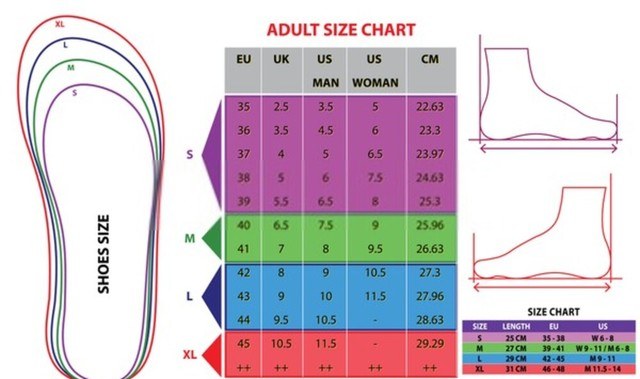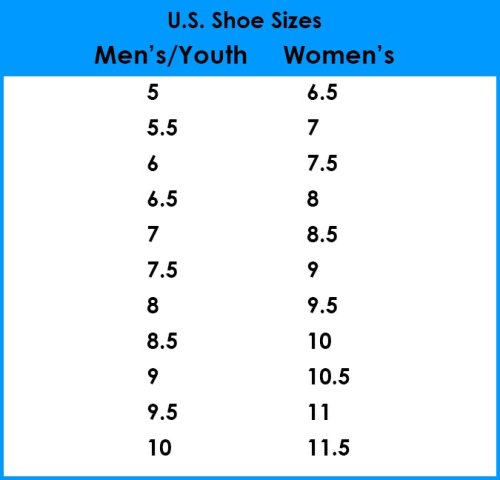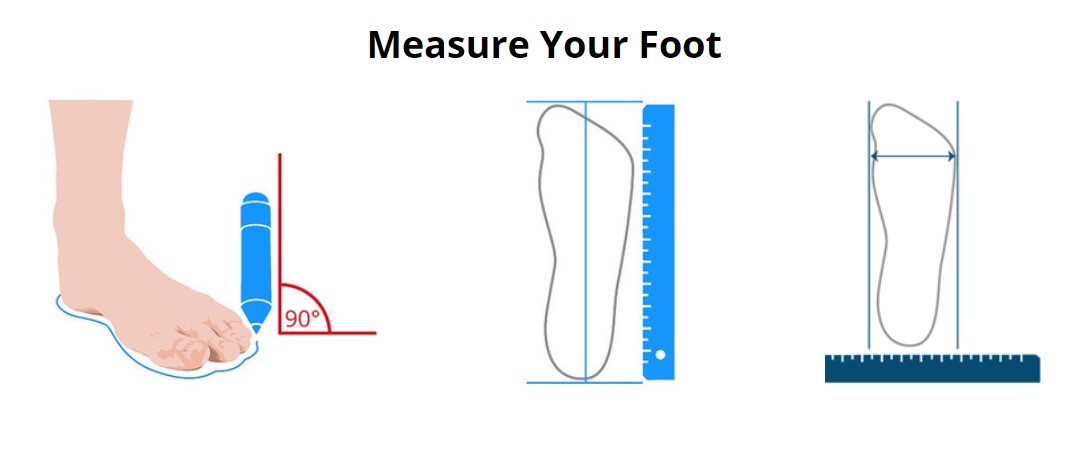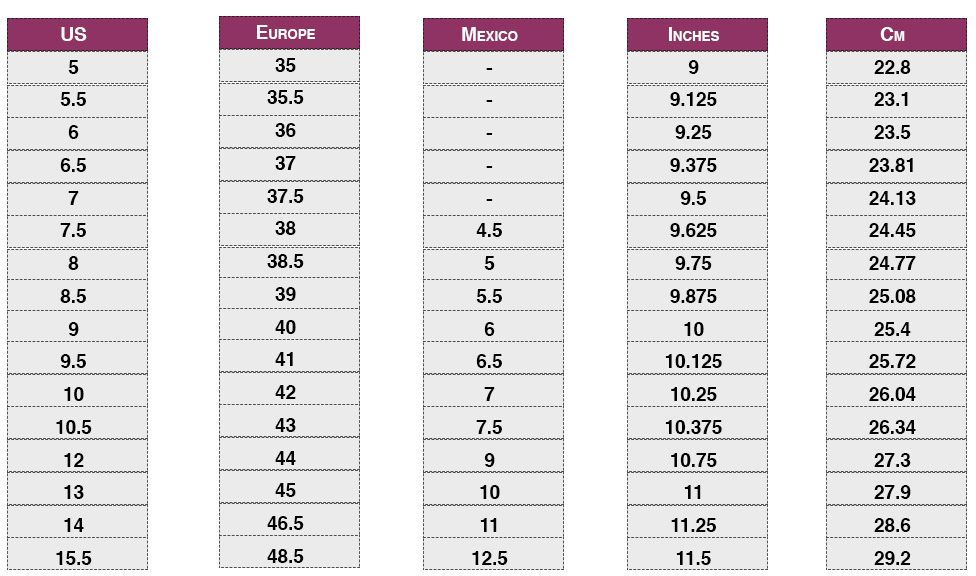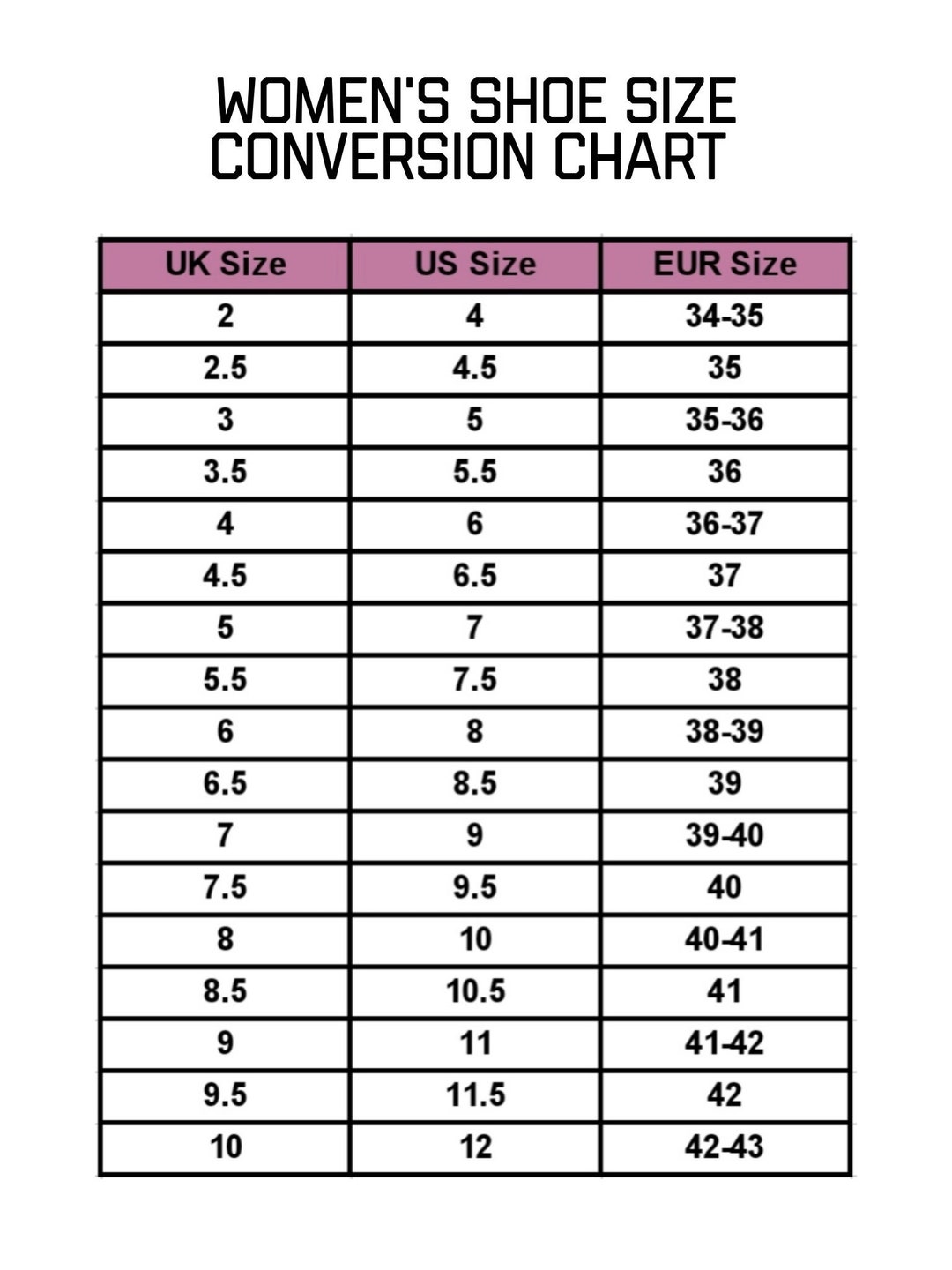The Difference in Shoe Size: A General Overview
Historically, societal norms and expectations have contributed to the difference in shoe sizes between men and women. Women’s shoes, for instance, were often designed to be smaller and daintier, reflecting gender stereotypes and ideals. However, modern shoe manufacturing has evolved, focusing more on functionality and comfort rather than adhering to traditional gender norms.
On average, men’s shoe sizes range from 8 to 12, while women’s shoe sizes typically fall between 5 and 10. It’s important to note that these ranges can vary based on brands and countries. For example, European shoe sizes for women can extend up to size 48, while US women’s sizes usually max out at size 15. Similarly, European men’s sizes can reach up to size 50, while US men’s sizes typically go up to size 18.
Anthropometric Differences: Feet Shapes and Sizes
Anatomical differences between men and women’s feet play a significant role in the variation of shoe sizes. On average, men have larger feet than women, with a difference of approximately 1.5 to 2 sizes. This difference is primarily due to men’s greater height, weight, and muscle mass, which contribute to larger bones and overall foot size.
Beyond size, there are other notable differences in foot shape between genders. Women generally have narrower heels and wider forefeet than men, which can impact shoe fit and comfort. Additionally, women tend to have lower arch heights than men, which can affect shoe selection and support needs.
Considering these anatomical differences is crucial when purchasing shoes, as it ensures proper fit and support. A well-fitted shoe should accommodate both length and width, with ample room in the toe box and adequate arch support. Neglecting these factors can lead to foot discomfort, pain, and potential long-term health issues.
How to Measure Your Feet for the Perfect Shoe Size
To ensure a proper fit when purchasing shoes, it’s essential to measure your feet accurately. Follow these steps to determine your foot size:
- Obtain a ruler, a piece of paper, and a pen or pencil.
- Place the paper on a hard, flat surface and ensure it’s large enough to accommodate the entire length of your foot.
- Sit in a chair with your feet flat on the floor and your legs uncrossed. Position the paper in front of your feet.
- Place one foot on the paper, ensuring it’s flat and your heel is aligned with the edge of the paper. Mark the longest point of your foot, usually near the big toe, with the pen or pencil.
- Measure the distance from the edge of the paper to the mark you made in centimeters or inches.
- Repeat the process for your other foot, as one foot may be slightly larger than the other. Use the larger measurement as your shoe size.
- Consider the width of your foot as well. Most shoe brands offer a standard width, but some provide narrow, wide, or extra-wide options. Measure the width of your foot at its widest point, typically near the base of your toes, to determine if you require a wider fit.
- Once you have your foot measurements, consult a brand’s size chart for a more precise fit. Keep in mind that different brands may have slightly varying sizing, so it’s crucial to use the specific chart provided by the brand you’re interested in.
- Always try on shoes before purchasing, and break them in gradually to ensure a comfortable fit.
Shoe Size Conversion: Navigating Different Sizing Systems
Understanding the differences between various shoe sizing systems is crucial when comparing shoe sizes between men and women or when purchasing shoes from different countries. Here are the most common sizing systems and their unique features:
- US Sizing: This system is based on a numerical scale, with whole and half sizes available. Men’s sizes typically range from 4 to 20, while women’s sizes range from 4 to 13.
- UK Sizing: Similar to the US system, the UK system uses a numerical scale with whole and half sizes. However, UK sizing for women often includes half sizes up to size 11, while men’s sizes range from 1 to 15.
- EU Sizing: The European sizing system uses a numerical scale based on centimeters. Men’s sizes range from 35 to 53, while women’s sizes range from 32 to 46.
- Japanese Sizing: Japanese sizing is based on a numerical scale with whole sizes. Men’s sizes range from 22 to 31, while women’s sizes range from 15 to 30.
To help you navigate these different sizing systems, here’s a simple conversion chart:
| US Men | US Women | UK Men | UK Women | EU Men | EU Women | Japan Men | Japan Women |
|---|---|---|---|---|---|---|---|
| 4 | 5 | 5 | 2 | 35 | 36 | 22 | 15 |
| 5 | 6 | 6 | 3 | 36 | 37 | 23 | 16 |
| 6 | 7 | 7 | 4 | 37 | 38 | 24 | 17 |
| 7 | 8 | 8 | 5 | 38 | 39 | 25 | 18 |
| 8 | 9 | 9 | 6 | 39 | 40 | 26 | 19 |
| 9 | 10 | 10 | 7 | 40 | 41 | 27 | 20 |
| 10 | 11 | 11 | 8 | 41 | 42 | 28 | 21 |
| 11 | 12 | 12 | 9 | 42 | 43 | 29 | 22 |
| 12 | 13 | 13 | 10 | 43 | 44 | 30 | 23 |
| 13 | 14 | 14 | 11 | 44 | 45 | 31 | 24 |
| 14 | 15 | 15 | 12 | 45 | 46 | – | – |
Keep in mind that some brands may have slightly different sizing, so always refer to the brand’s size chart when possible.
Popular Shoe Brands: Size Differences and Considerations
When shopping for shoes, it’s essential to consider the brand and its sizing tendencies. Some brands may run small, true to size, or large, and understanding these differences can help you find the perfect fit. Here are some popular shoe brands and their sizing considerations:
- Nike: Nike shoes generally run true to size, but some customers find that they fit slightly small. It’s recommended to order a half size larger if you’re between sizes.
- Adidas: Adidas shoes tend to fit true to size, but some styles may fit more snugly than others. Consider trying on shoes or ordering a half size larger if you’re unsure.
- New Balance: New Balance shoes are known for their wide range of width options, making them a popular choice for people with wider feet. However, some customers find that their shoes fit a bit large, so consider ordering a half size smaller if you’re between sizes.
- Converse: Converse shoes are known to fit small, especially in the width. It’s recommended to order a half size larger than your usual size or consider a wider width if available.
- Vans: Vans shoes are generally true to size, but some customers find that they fit more snugly than other brands. Consider trying on shoes or ordering a half size larger if you’re between sizes.
- Birkenstock: Birkenstock shoes are known for their unique cork footbeds that mold to your feet over time. They tend to fit true to size, but some customers find that they fit more snugly at first. Consider ordering a half size larger if you’re between sizes or if you prefer a roomier fit.
When purchasing shoes from a new brand, it’s essential to read online reviews and customer feedback to gauge the brand’s sizing tendencies. If possible, try on the shoes in-store or order multiple sizes online to ensure the best fit.
Frequently Asked Questions: Shoe Size Differences
When it comes to the difference between men and women’s shoe sizes, there are several common questions and misconceptions. Here, we address some of these concerns and provide accurate and informative answers based on scientific research and expert opinions.
Do men’s and women’s feet stop growing at different ages?
While it’s true that men’s feet typically grow larger and wider than women’s, both genders’ feet stop growing at around the same age, usually around 18 to 20 years old.
Is there a significant difference in the average shoe size between men and women?
Yes, on average, men’s shoe sizes are about 1.5 to 2 sizes larger than women’s. This difference is primarily due to men’s larger overall body size and weight, which contribute to larger bones and, consequently, larger feet.
Does shoe size impact athletic performance?
There is no conclusive scientific evidence to suggest that shoe size directly affects athletic performance. However, wearing properly fitted shoes is crucial for comfort, support, and injury prevention, which can indirectly impact performance.
Why do some brands’ shoes fit differently than others?
Shoe brands may have different design philosophies, target markets, and manufacturing processes, which can result in varying fits. Some brands may cater to narrow or wide feet, while others may prioritize style or performance features that affect the overall fit.
How can I ensure I’m purchasing the right shoe size, especially when shopping online?
When shopping for shoes online, consult the brand’s size chart and read customer reviews to gauge the brand’s sizing tendencies. Consider ordering multiple sizes and returning the ones that don’t fit. When shopping in-store, try on shoes at the end of the day when your feet are at their largest, and wear the same type of socks you’ll wear with the shoes.
Tips for Finding the Right Shoe Size: Online and In-Store
To ensure a perfect fit when purchasing shoes, consider the following practical advice, whether you’re shopping online or in-store. Keep in mind the main keyword “difference between men and women shoe size” for SEO purposes.
In-Store Shopping
- Try on shoes at the end of the day when your feet are at their largest due to natural swelling.
- Wear the same type of socks you’ll wear with the shoes, as sock thickness can affect the fit.
- Walk around the store to check for comfort and proper fit, ensuring there’s enough room in the toe box and heel area.
- Ask sales associates for assistance, as they may have specific knowledge about the brand’s sizing tendencies or unique fit features.
Online Shopping
- Consult the brand’s size chart and compare it to your foot measurements, as different brands may have varying sizing systems.
- Read customer reviews and feedback to gauge the brand’s sizing tendencies and potential fit issues.
- Order multiple sizes if you’re unsure, and return the ones that don’t fit according to the retailer’s return policy.
- Check the retailer’s return policy before purchasing, as some may have restrictions or fees for returns.
By following these tips, you’ll be better equipped to find the right shoe size for your feet, ensuring comfort and health regardless of the brand or shopping method.
The Importance of Properly Fitted Shoes: Health and Comfort
Wearing properly fitted shoes is crucial for overall health and comfort, as ill-fitting shoes can lead to various foot problems. Understanding the significance of the “difference between men and women shoe size” and selecting the right shoe size is essential to prevent issues such as blisters, bunions, and hammertoes.
Preventing Foot Problems
- Blisters: Ill-fitting shoes can cause friction and result in blisters. Properly fitted shoes with the correct size and shape can help prevent blisters and reduce discomfort.
- Bunions: Bunions are bony bumps that form on the joint at the base of the big toe, often caused by wearing narrow shoes or high heels. Ensuring a proper fit can help alleviate pressure and prevent bunions from developing or worsening.
- Hammertoes: Hammertoes are deformities that cause the toes to bend or curl, often due to ill-fitting shoes or high heels. Wearing properly fitted shoes with ample room in the toe box can help prevent hammertoes and alleviate discomfort.
Comfort and Health
Beyond preventing specific foot problems, properly fitted shoes can contribute to overall comfort and health. Shoes that fit well can help maintain proper posture, reduce foot and leg fatigue, and minimize the risk of injuries during physical activities. Moreover, wearing comfortable shoes can positively impact mental health, as discomfort and pain can negatively affect mood and well-being.
Prioritizing Fit Over Fashion
While style and fashion trends are important considerations when purchasing shoes, it’s crucial to prioritize fit and comfort. Choosing shoes with the right size and shape can help ensure health and comfort, reducing the risk of foot problems and promoting overall well-being. By understanding the “difference between men and women shoe size” and selecting shoes accordingly, you can enjoy a stylish and comfortable shoe collection that supports your foot health.


